Deep beneath the tranquil surface of Lake Ontario rest two extraordinary vessels that have captivated maritime historians and archaeologists for decades. The USS Hamilton and USS Scourge, once proud warships of the American fleet, now serve as remarkable underwater museums, preserving a haunting chapter from the War of 1812.
The Fateful Storm of August 1813
When Merchant Ships Became Warriors
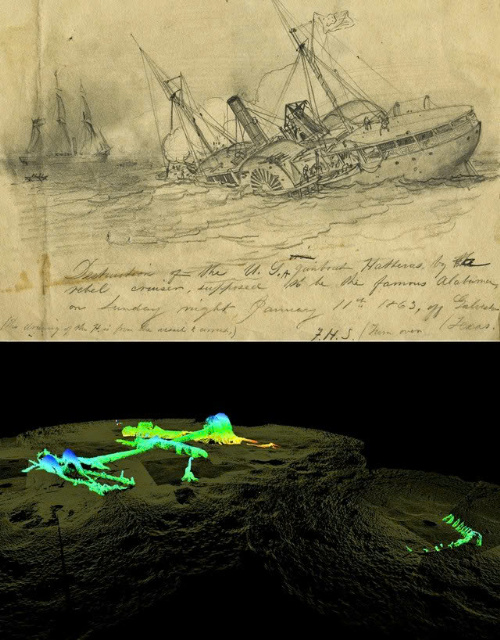
During the height of the War of 1812, the Great Lakes transformed into battlegrounds where naval supremacy could determine the outcome of the conflict. Hamilton and Scourge began their lives as peaceful merchant schooners, but the demands of war saw them converted into armed vessels for the United States Navy. This transformation, while necessary, would prove to be their undoing.
The conversion process involved mounting heavy naval cannons on decks never designed to bear such weight. This modification made both vessels dangerously top-heavy and prone to instability—a critical design flaw that naval commanders of the era often overlooked in their urgency to bolster their fleets.
The Night That Changed Everything
August 8, 1813, started as an ordinary summer evening on Lake Ontario. The two warships were patrolling the waters as part of their regular duties when nature unleashed its fury. A violent squall, the kind that can appear without warning on the Great Lakes, struck with devastating force.
Within mere minutes, both Hamilton and Scourge succumbed to the storm’s power. Their top-heavy design proved fatal as they capsized and plunged into the lake’s depths, carrying 53 brave sailors to their watery graves. The speed of the disaster left no opportunity for rescue or escape, creating one of Lake Ontario’s most tragic maritime disasters.
A Century of Silent Slumber
The Long Sleep Beneath the Waves

For more than 160 years, Hamilton and Scourge lay forgotten in their underwater tomb, 88 meters below the surface. The cold, oxygen-depleted waters of Lake Ontario created perfect conditions for preservation, essentially freezing these vessels in time while the world above transformed through industrial revolution, world wars, and technological advancement.
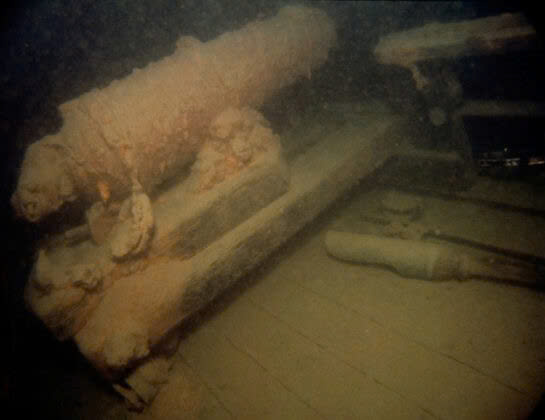
The Moment of Rediscovery
In 1973, Dr. Daniel Nelson, a passionate amateur archaeologist and dentist from St. Catharines, Ontario, made a discovery that would rewrite maritime archaeology. Using primitive detection equipment by today’s standards, Nelson located what would prove to be two of the most perfectly preserved shipwrecks ever found in freshwater.
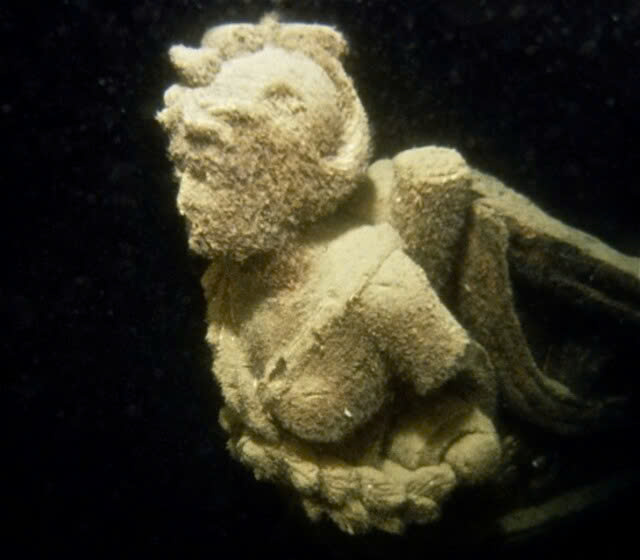
The confirmation came two years later in 1975, revealing an archaeological treasure beyond imagination. Unlike countless other wrecks from this period—typically reduced to scattered timber and fragments—Hamilton and Scourge stood upright and virtually intact on the lakebed.
Underwater Time Capsules
Extraordinary Preservation
What makes these shipwrecks truly exceptional is their remarkable state of preservation. Complete decks remain structurally sound, cannons sit ready as if their crews had just stepped away, and personal effects lie scattered exactly where they fell on that tragic night in 1813.
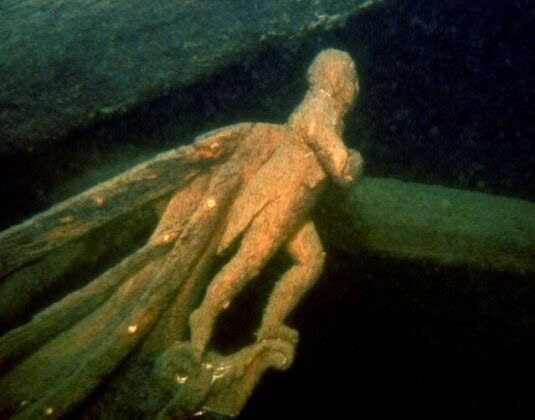
The ships’ figureheads tell their own story of transformation: Hamilton proudly displays Diana, the Roman goddess of the hunt, while Scourge bears the carved likeness of Britain’s Admiral Nelson—ironic reminders of their merchant origins and the complex nature of naval warfare during this period.
Even crossed cutlasses remain in position, creating an almost ghostly scene that speaks to the sudden nature of the disaster that befell these vessels and their crews.

Modern Exploration and Scientific Discovery
Legendary Expeditions
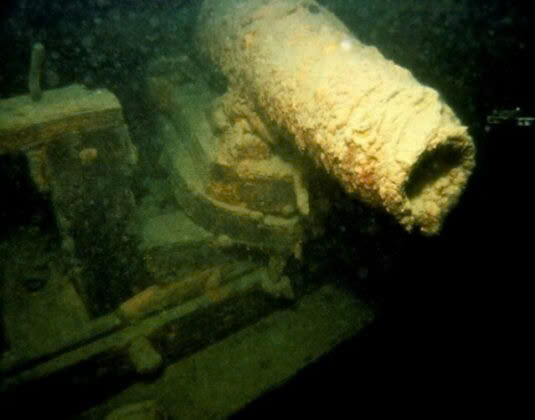
The exceptional preservation of Hamilton and Scourge has attracted some of the most celebrated names in underwater exploration. In 1980, the legendary Jacques Cousteau descended to examine these underwater monuments, followed a decade later by Robert Ballard, famous for discovering the Titanic.
Groundbreaking Documentation
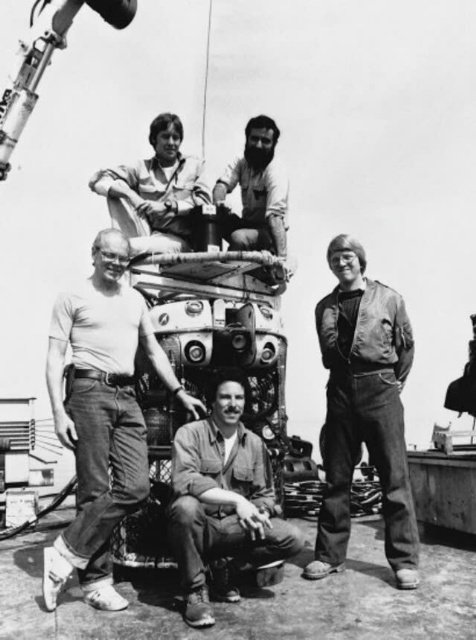
The 1982 expedition led by Emory Kristof marked a turning point in the scientific study of these wrecks. Using revolutionary underwater photography techniques, Kristof’s team captured over 2,000 detailed images that remain invaluable to researchers today. These photographs provide a baseline for understanding how the wrecks have changed over time and continue to serve as crucial documentation for ongoing preservation efforts.
Contemporary expeditions, including those conducted by Parks Canada, have employed advanced sonar mapping technology to create detailed three-dimensional models of both vessels, adding new layers to our understanding of their construction and current condition.
Threats to an Underwater Heritage
The Invasion of Quagga Mussels
Despite their protected environment, Hamilton and Scourge face a modern threat that could compromise their historical value. Quagga mussels, an invasive species introduced to the Great Lakes through international shipping, have established colonies throughout the lake ecosystem, including on the wrecks themselves.
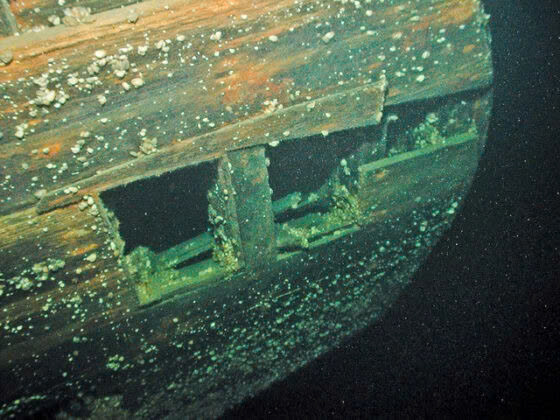
These small but prolific mollusks gradually encrust surfaces, obscuring the fine details that make these shipwrecks so archaeologically significant. Over time, they threaten to completely mask the ships’ features, making future study and documentation increasingly challenging.
Video
Environmental Challenges
Lake Ontario’s environment, while preserving the wrecks, also presents ongoing challenges for researchers. The cold, dark waters with limited visibility require specialized equipment and expertise for safe exploration. Advanced technologies like side-scan sonar and magnetometers have become essential tools for studying these sites without causing damage.
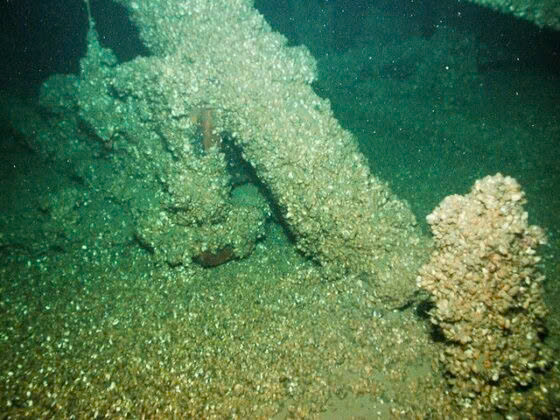
Voices from the Deep
Survivor’s Testament
Among the human stories connected to this tragedy, the account of Ned Myers stands as particularly compelling. As one of the few survivors from Scourge, Myers lived to tell the tale of that terrifying night. His firsthand testimony provides invaluable insight into the human experience of naval warfare and the personal cost of the conflict that raged across the Great Lakes.
Myers’ narrative serves as a bridge between the physical remains resting on the lakebed and the living, breathing people who once called these ships home. His story reminds us that beneath the archaeological significance lie very human stories of courage, fear, and loss.
Preservation for Future Generations
Protected Status and Conservation
Recognizing their immense historical value, both Hamilton and Scourge have been designated as National Historic Sites of Canada. This protected status ensures that unauthorized diving is prohibited and that any research activities are carefully regulated and monitored.
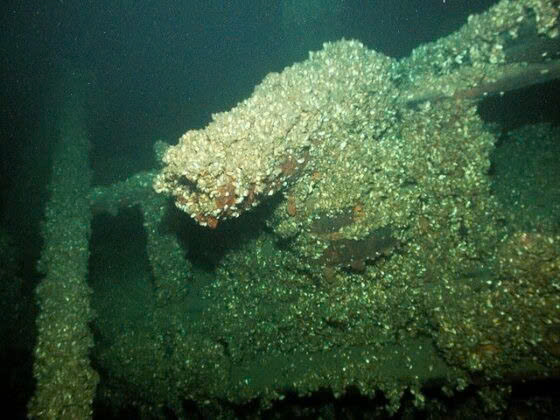
Sophisticated monitoring systems track the condition of both wrecks, while ongoing partnerships between the City of Hamilton, Parks Canada, and other organizations work to ensure their long-term preservation.
Video
The Question of Recovery
The possibility of raising these vessels, similar to successful projects like Sweden’s Vasa or England’s Mary Rose, has been extensively debated. However, the extensive colonization by quagga mussels and the structural challenges involved make such an undertaking impractical and potentially destructive.

Instead, there is growing interest in creating full-scale replicas that could serve educational purposes while leaving the original vessels undisturbed in their underwater resting place.
Legacy of the Deep

The USS Hamilton and USS Scourge represent far more than archaeological artifacts—they are profound connections to a pivotal moment in North American history. These underwater sentinels stand as eternal monuments to the sailors who served aboard them and the broader conflict that shaped the relationship between the United States and Canada.
Their continued preservation beneath Lake Ontario’s waters ensures that future generations will have the opportunity to study and learn from these remarkable time capsules. As technology advances and our understanding of underwater archaeology evolves, Hamilton and Scourge will undoubtedly continue to reveal new secrets about naval warfare, shipbuilding techniques, and daily life during the War of 1812.

These ghost ships serve as powerful reminders that history lives not only in books and museums but also in the hidden depths of our waterways, waiting to share their stories with those patient enough to listen and dedicated enough to preserve them for posterity.
